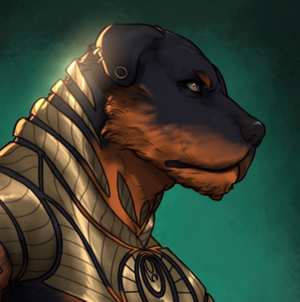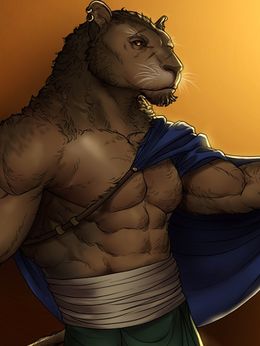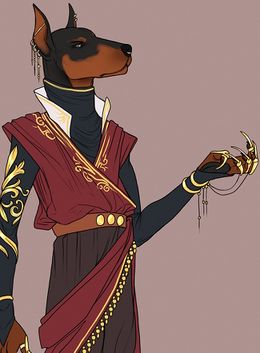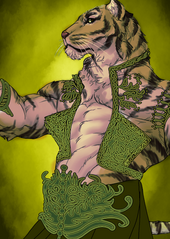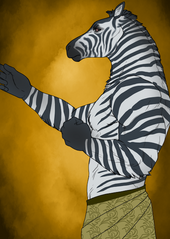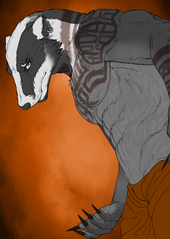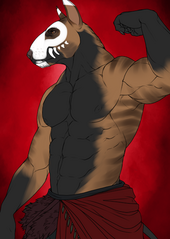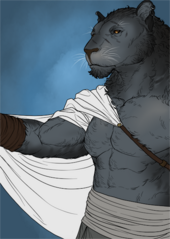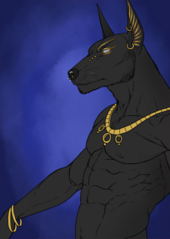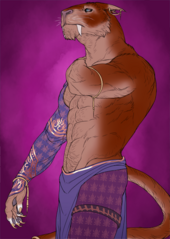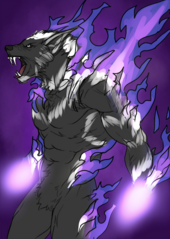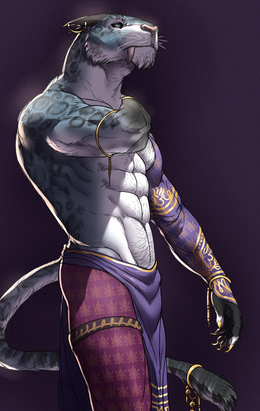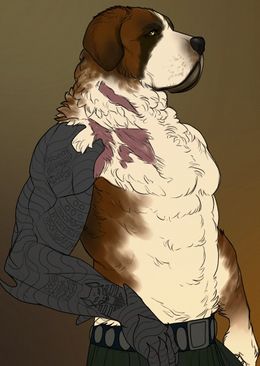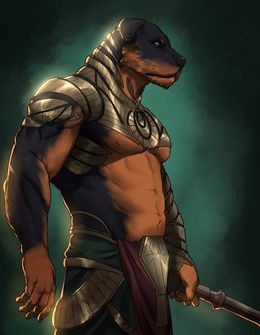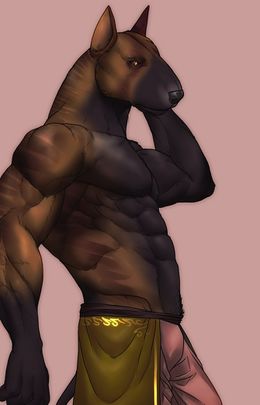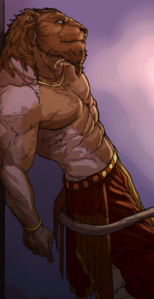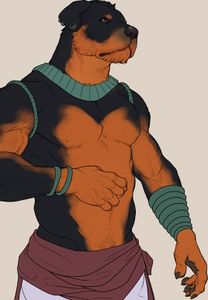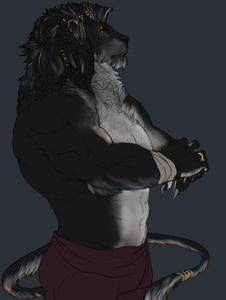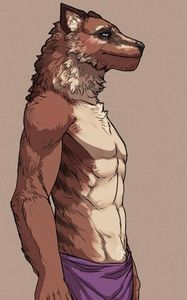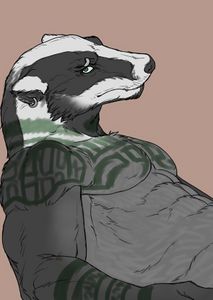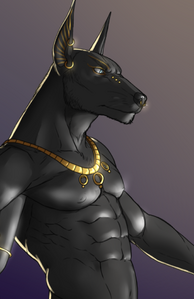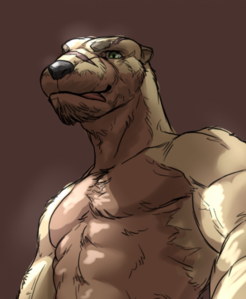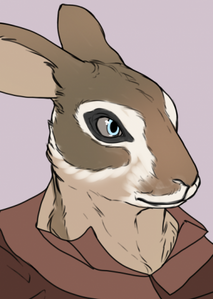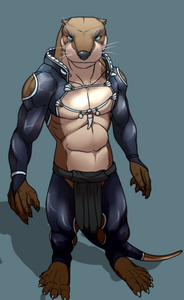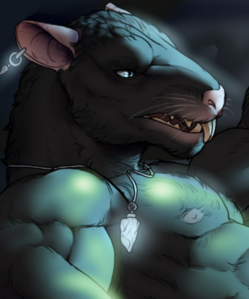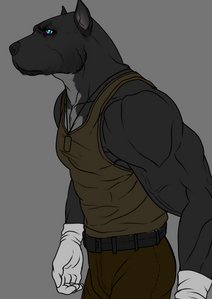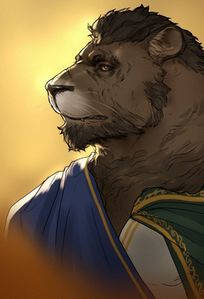Asha: Difference between revisions
No edit summary |
No edit summary |
||
| Line 2: | Line 2: | ||
|name = Asha | |name = Asha | ||
|test = Ankh-Sa (in Ibeth) | |test = Ankh-Sa (in Ibeth) | ||
|test2 = [[File: | |test2 = [[File:Ashaflafg.png|80px]] | ||
|test3 = '''Motto:''' "In Misery and Life, none left behind." | |test3 = '''Motto:''' "In Misery and Life, none left behind." | ||
|image = C1f01d9206ad2d5439fd5270c54b9356.png | |image = C1f01d9206ad2d5439fd5270c54b9356.png | ||
Revision as of 17:03, 22 September 2023
The Asha are the oldest continuously existing Race on Aloria, even pre-dating the Elven Allorn Empire, though has undergone massive changes throughout history. Under the early Dewamenet Empire, the Asha were poised to conquer vast parts of the world, however they came into conflict with the just-founded Allorn Empire. A cataclysmic war of Dewamenet Technology versus Allorn Magic erupted, which the Dewamenet lost. The surviving Dewamenet were enslaved by the Allorn Empire and used for tens of thousands of years as magically bound servants, while their Empire collapsed and their cities turned to dust. Despite Elven attempts to eradicate their culture, parts of it survived through being passed down within bound memories, and some Elves who were sympathetic to their fate. When the Allorn Empire collapsed under its own weight following the last Void Invasion, many Asha violently rose up and overthrew their Elven masters, establishing states of their own, and reconnecting with things from the past. In the modern day, the Asha are still very much affected by their millennia of servitude, with many of them having taken to the seas to attack Elven ships, try to free still enslaved Asha brethren, or turn to Regalia to discover parts of their past lost to time. The Asha are a Race that are slowly rediscovering their past in the world, and for many, to discover how the past has defined them and how they will define the future of all Asha.
Design
The Asha are a collective Race of anthropomorphic animal-people, the closest approximation of a "Furry-Race" on MassiveCraft. A wide range of animal types are available, from canine to equine to feline, to marsupials and more. Hybrids between species are also possible, while the Asha can have plantigrade legs and feet or digitigrade legs and clawed feet and hands. They can have a wide variety of natural eye colors, as well as natural fur colors and patterns, but there is a great deal of freedom to change, for example using leopard fur patterning for a canine-otter hybrid design. Some unnatural colors are also available to some of the Legacies. It is important to also mention the Half-Asha, who the Asha consider full members of their Race. Half-Asha are Asha born from dominant Asha parentage that show Asha traits like animal ears, tails, fur, but otherwise have more facial features of other Races. Common appearances are for example animal like eyes, ears, claws, tail and legs, but mostly Ailor or Elven skin, facial features and build.
Why Asha in Regalia
Why Asha in Regalia is a section designed to give (new) Players some idea for why a Race might want to be in Regalia, as opposed to their homeland, as some Races are heavily homeland-coded and may need some contrivances to actually Roleplay in Regalia, where all the on-server activity takes place. While you can usually extrapolate other reasons from the Lore on this page, this section provides a few easy-access suggestions.
- Free from Isolation: The Ashal States, even if they are their own, are intensely isolated from the outside world and do not allow non-Asha to their interior beyond the coastal trade cities. Many Asha are curious to the wonders of the world, and travel particularly to Regalia, where they can experience everything (including all the chaos and anarchy) that the world has to offer concentrated in one city.
- Rediscover the Past: The Asha have mostly been dispossessed by other Races of their land. Over the tends of thousands of years since the fall of the Dewamenet Empire, Elves and Ailor have inhabited the lands where once their cities stood. This makes rediscovering the past contingent on the approval of these local people to engage in archeology and adventuring to discover the past, usually by obtaining permission in Regalia.
- Reconnect with Others: The Asha are a very disconnected Race. Many of the Asha are still enslaved by the Elves and were not able to escape the clutches of the reborn Allorn Empire, while many are spread far and wide in the winds. Regalia acts as a neutral common ground for many Asha of different walks of life to find and connect with each other, and learn the after effects of their history on their people.
- Center of Opportunity: Whatever anyone thinks of Regalia, it remains the center of opportunity to do and become literally anything. After having been deprived of opportunities for tens of thousands of years, the Asha finally stand at the cusp of becoming anything they like, and the means are usually provided in a global metropolitan place like Regalia, whether they choose to fit in or not.
Racial Traits
Racial Traits are a set of Abilities, Free Packs, Limitations, and Mechanics that each Race has access to. Half-Race characters select a dominant parent, thus receiving all Racial Abilities & Talents of that Race only, unless specified otherwise, while also taking dominant physical traits like for example skin tone, hair and fur color, ear shape, etc. If Abilities, Free Packs, Limitations, or Mechanics are not mentioned, it is safe to assume this Race does not have one of those. Abilities are usually Combat-Roleplay based, Free Packs give free Proficiency Packs that fit in a Race's design, Limitations are limits imposed on Character design to stay consistent with lore, while Mechanics change the way a Character is played, or how certain Packs interact in Roleplay.
Abilities
| Ability Name | Ability Type | Ability Range | Ability Description | Modifiers |
|---|---|---|---|---|
| Body Claws | Morph Power | Self | Grants the user Body Claws | Asha Modifier |
Mechanics
- Dewamancy: Asha are intricately linked with a metallic substance called Living Metal. This Living Metal is solid and tough as steel, though in the hands of the Asha, turns to a semi-liquid state that can be moved around and controlled and reshaped by them. Living Metal is a finite resource in the world, but nearly every Asha has some (and can buy more on the Regalian Market). Living Metal is also a crucial component of Asha technology, capable of forming complex functional systems inside its metal body that mimic organic structures, hence the name Living Metal.
- Sulfurmancy: Asha claws (or nails, hooves) have special properties, secreting a Sulfur-like self-coating that when struck against porous surfaces like stone or metal, produces a flint-and-steel or metallic spark, capable of igniting dry materials. This allows the Asha to produce loud bangs by scraping their nails together, and even ignite fuse-lit weapons or cigarettes with their claws without any open fires. Additionally, their claws retain a high heat temperature in warm environments, allowing them to dry their fur rapidly if made wet, and even cause small bodies of water to produce steam by inserting their claws into them.
- Predators: While Asha are omnivores, many scholars speculate that in a distant past, they were carnivorous hunters. All Asha are capable of running on all fours if they have digitgrade legs, while the aquatic Asha can swim in water at great speed. Their eyes allow them to see even in low-light or dark environments, and they have a strong sense of smell. This allows them to track those who they have a personal belonging from, from miles away even. Finally, Asha have a unique language made out of animalistic sounds, body language and tail movements that only they can "speak". It is not complex for whole conversations, but can express approval, distaste, or simple concepts.
Legacy's Will
Asha have a unique mechanic called Legacy's Will, that dictates some Mechanics (and potentially Free Packs and Abilities), that can only be acquired during a particular Will Phase. There are several rules associated with Legacies, listed below. Note, there is no morally or ontologically correct Legacy, each of them represent a different way of viewing the world, the Asha themselves, but more importantly: the Elves. Legacies are also changeable, explained in the Rules below.
- Each Asha Character or Asha dominant Half-Asha can choose two different Legacies, or the same Legacy Twice.
- Choosing the same Legacy Twice, results in the Free Pack Bonus being doubled for that Asha.
- Changing Legacies in Roleplay, results in Free Packs from lost Legacies being removed.
- Asha Characters may change Legacies once per month, usually as a result of Roleplay.
|
|
|
|
|
|
|
|
Language & Naming
Home Asha speak a Language called Ibeth which is more of a modern take on old Dewamenet which is largely lost. Ibeth is based off real-world Ancient Egyptian, though it should be noted that language knowledge and even naming principles among the Asha are extremely varied. It is often speculated that Ibeth is only spoken by a minority, while most Sea, City, and Bound Asha speak Common, or any of the other local Ailor or Elven languages depending where they are from. The Asha distinguish an "Old Name", which is names in the style of the Dewamenet Empire (Ancient Egyptian) like Sekhet, Senefw, Nefer, Satuhotep, though it is far more common for Asha to have a name found in any other culture like Teledden, or Ailor. It is not uncommon to meet an Asha with the name James, Niall, Godric, Celen, etc, though every Asha generally has an Old Name which they mostly keep private except for close friends and other Asha. Any name works for the Asha, because they can exist next to or inside any other society. Elven naming is the only thing Asha will not criticize each other over, because it seems in bad taste to bully an Asha for having been born in slavery and having been given an Elven name.
Society
Religion
It is believed by most that the ancient Asha in the age of the Dewamenent worshiped a greater array of gods, or had a greater religious pluralism than may be understood now. As it stands, the current faith, the Faces of Baskarr, is a narrower version of their ancient mythology, the five remaining deities kept alive by the prayers of Asha to gods they barely knew. It should be noted however that many Asha also subscribe to other religions, especially Unionism which features two native Asha Gods, allowing the Asha to find easy representation in the pantheon not easily found elsewhere. Another form of faith that is common, is Ordial Cultism, usually with an emphasis on Khannar worship, but other Ordial Entities can also be found to be held among the Asha as Gods. The habit for Ordial Cultism comes from the collective societal trauma at the mistreatment of the Elves, endearing a revanchist and very fatalistic attitude in many Asha that cause them to seek higher powers from other dimensions to satisfy their desire for justice to be brought onto the knife-ears.
Fashion
Asha clothing is often very simple in its application of garments yet rich in texture and patterning. Beyond a simple chest cloth worn by women and leather straps worn by men to attach objects to, most Asha rarely wear any clothing on their upper body when they don’t seek a reason to blend into other societies. On their lower bodies meanwhile, all wear a so-called Satoor, a dress-like clothing piece often in earthen or burgundy color tones with a variety of intricate patterns in vibrant colors that spans from the waist to the ground. These Satoors are often specially tailored to allow a tail to protrude from the back, and also have individual cuts on the front and sides to allow a free range of motion for Asha in combat. The Satoor is, in fact, a crucial piece for many cultural traditions of the Asha. As part of decoration for the Satoor, high officials may also wear shoulder capes or shoulder pelts from Muff-oxen. Jewelry is also a very much prized accessory for all genders of Asha, with numerous necklaces and ear piercings being the norm in adults. The Asha recognize the difference between a civilian Satoor and a combat Satoor in that combat Satoor cut off at the knees, while those for civilians end at the ankle or a bit higher. The Asha also have a fabric that was once unique to them alone, produced by the coastal Asha which has since expanded world-wide. Elastan, a form of lycra, is made from natural blue threads excreted by the unique coral species called Mewnes. The fabric is inherently liquid deterrent, and Elastan clothing made by the Asha usually covers their arms and shoulders, as well as their legs and waist, but does not cover their torso. Elastan was eventually also mixed with other fabrics, creating Peltastan, a form of wooly spandex. It has properties similar to those of Elastan, being form-fitting and soft, but Peltastan is not water repelling. Peltastan clothing is usually worn on the torso and upper leg area, while a half-Satoor is worn over it like a battle skirt, often with shoulder pads to boot. Such pads are often light and decorative, as Asha effectively do not wear armor, in order to benefit from their superior agility over other Races. When protection is required, Living Metal is capable of forming a quick, sleek coating for their defense.
World View
World View is optional content that helps give Asha flavor and depth.
- Asha society is one of the only societies that strictly bans Magic, even the passive usage of it primarily because Magic has played such an important role in their suffering throughout their existence.
- The Asha’s views of Magic may be scoffed at as limited to many, because their society only seems to recognize the Exist and Void as powers, while ignoring Ordial entirely. This is for good reason, however, for both the Exist and Void were used to hurt the Asha, while Ordial power has been part of their people’s culture for a very long time. In fact, to the Asha, the term Ordial means nothing, as the idea of the afterlife and life beyond the physical world is crafted into their faith and customs, and is viewed as completely natural.
- Magic usage in the Ashal Kingdoms is strictly illegal, and on the high seas, the Asha Corsairs are known to execute Mages immediately after a battle and if any were captured. Many know this, which is why the waters around the Asha States are called the “Mageless Waters", on account of all Mages veering far around the general raiding zones of the Corsair Fleets.
- Tails are immensely important to the Asha, and serve as major indicators of non-verbal emotion, and expressions of pride. An Asha without a tail is like an Asha without pride, and faces humiliation in Asha society. This is largely the reason why it was so common for the Allorn to cut off Asha tails at birth, a practice that still exists today. Some Asha have gone through lengths to re-acquire their tail, most using Living Metal to replace it.
- Common uses of the tail include, but are not limited to: expressing adoration for a person depending on the tightness of a tail included in a hug, using the tail to point at desired objects or slowly caress them to show interest, swishing the tail around to express candidness or pride, binding the tail around one’s leg or waist to express fear or loathing, striking the tail on the floor for a challenge or mockery, slapping others with a tail in teasing or flirtatious manner, and holding objects of great importance with the tail by wrapping it around them. Nearly every statement or request made by Asha includes some sort of positioning or motion of their tail, indicating their intent or emotional feeling behind it. This is why it may sometimes be hard for Asha to lie to other Asha, as many of these tail movements are involuntary.
- The worst insult is to pull on an Asha’s tail, stand on it, or generally just dismiss or ridicule the appendage. Asha tails are collected by some Kathar priests and priestesses for Void Worship rituals, or as trophies for the amount of Asha sacrificed to the Void Gods, largely being the reason why the Asha have a particular hatred for Kathar religious leaders, more so than all the other kinds of Kathar.
- The majority of the Asha’s active military power can be found on the high seas, where they are considered some of the most skilled sailors and marines known to Aloria. Asha are unrivaled in their ability to sprint, dance, pounce, roll, and move around on deck, flinging themselves from ropes and balancing on thin beams to gain the upper hand and the higher ground.
- The Asha commonly use the Shefdew, or Moon-Blade polearm in their combat with others, alongside the Sensy, a smaller blade seen used on Asha tails. These weapons both form part of the Tutelage of Mirah, the form of instruction used to teach most Corsairs and land forces of the Asha. Still, Asha are capable of picking other weapons too, and Asha mercenaries have been seen using a wide range of blades and more.
- The Asha frequently use beasts of burden or large animals for the purpose of siege, or general brute force damage during a battle. These are most often the Maarhanet, or Seqherat. However, the use of Living Metal constructs has only continued to grow in recent years.
- Asha cuisine is heavily varied as they are spread across Aloria. In general, they have a simple but rich diet based on meats served with spices, eggs and dairy products such as cheeses and yogurt, the dish Car-Ki’fo best exemplifying this blend of ingredients. Their meat exclusively comes from geese, quail, pigs, cows and any fish that can be caught, as they are highly sensitive to the killing of animals which look like members of their Race.
- The Asha are a physical Race, meaning nearly all forms of their recreation and relaxation involve some physical activity in their society. To that end, they have developed Sun-Courts, large open-air squares for physical activity and sports to be performed in. Enormous trees or Living Metal structures serve to create some shade in these spaces, and the game of Hisad appears in such spaces on a weekly basis.
- An important cultural expression of the Asha involves the Satoor is the Satoor-Bis Kahnar Hakkar, a wild dance performed by one seeking to court another. The dance itself is carried out with leaps involving fierce snarling expressions, grunting, chest beating and wild waving of claws, where the purpose is also to make the Satoor flow with poise and grace, in contrast to the intense expressions. The primary use of the dance is to impress a potential partner with an Asha's strength, though Asha can also perform it to intimidate enemies before battle.
- The boundary between enemy and passion are very thin for the Asha, and the “enemy turned lover” is a frequently seen romantic trope among the Asha, impressed with enemy soldiers or warriors in battle that they fall for them. This event is a rare occurrence in Corsair warfare, as most targets of Asha attacks are slave facilities, slaving ships, and other repulsive places, with few acceptable love interests among the guardians of such places. Instead, it often takes root in fighting pits, or tournament bouts.
- The ritual marriages between the Queens of the Ashal Kingdoms and the various Corsair leaders are part of the agreements of assistance between these Kingdoms and their ever-sharpening sword in world affairs. The rituals sometimes become actual marriages, but such connections strain the relationship as the Queens insist on keeping all daughters, and reject sons, while the Corsairs consider the intense focus on women from the city-dwellers to be a detriment.
- The Ashal Islands have two notable forms of coastal port. One is the Fair-Port, called Hesepah by the Asha, and is the sole area of the Islands where foreign Races can be found in great abundance. Merchants and artisans live and thrive in this place, and the limited trade the Kingdoms have with the wider world comes through this center. The other form of port are the Moon-Ports, massive facilities capable of handling the hundreds of ships that Corsair Fleets possess. Each Ashal Kingdom has one of these for the use by the Fleets, who cycle in and out of docking their ships for resupply, repair, and celebrations.
- The Great Journey is revered by the Asha as their period of migration from the lands of the former Allorn Empire to their new home in the Ashal Isles. The entire process took three years, and was led by the Siwath-Khenu who emerged to guide their people home. The event is also notable for the baggage train of Ailor and other Races, fellow former slaves, who followed or shadowed the Journey, despite being told they could not settle with the Asha. These other groups ultimately settled along the coastline, and became nations like Daen and Lusits.
- The Siwath-Khenu are currently believed to be focusing on those Asha still mass-enslaved in Ithania, and while overseers, masters and more are keeping their eyes peeled, whispers speak of their mission preparing their fellow Asha for freedom is well underway.
- Unlike the Silontaar, who have a manic fear of the Maraya, the Asha find the Maraya kindred spirits in most cases. Both Races suffered extreme loss in the past, and only recently recovered, or in the Maraya’s case, reawoke, to seek out their long damaged heritage. They also both have unique technologies crafted and specific to their Race. The Asha chalk the Silontaar’s manic paranoia to a corruption of Magic in their very blood, affecting how they see the world, and other dismissive, negative statements.
- The loss of the Repyt Corsair Fleet, which merged with Fin’ullen elements to form the Asha-Fin’ullen Sàllir subculture, was deeply shocking to the Asha Race as a whole. The Arc-Monoliths are frequently harassed by Corsair Fleets and Fin’ullen ships alike, both core elements of each Race disturbed by this union of Asha and Nelfin elements together. The Asha have not attacked their brethren outright, however, for unclear reasons, and any Corsair Fleet element that has done so has been disowned by Fleet leadership.
- The recent rebirth of the Allorn Empire was an extreme blow to Asha hopes for the future, as the fractured politics of the Teledden and Fin’ullen until that point made Corsair raiding operations far easier. Most Corsair Fleets have been forced to pull back from attacks on the Allorn as a result, and have turned their focus on Westwynd and other more central or southern locations.
Gallery of Art
Asha are really cool and awesome, and lots of art has been made of them.
Trivia
- There has been recent evidence that suggests the Asha may be far older than previously thought. Records of the fall of the Meraic Empire, released in 310 AC, show mammalian humanoids in service to the Race that would become the Maraya, and there is also the extreme paranoia the Silontaar, ancient offshoots of the Asha, have for that pastel Race.
- There are a total of sixteen Corsair Fleets in operation across Aloria, but five are most notable among their number. These include the Medes Fleet led by the unique dual leadership of Ladies Saalamun and Vasnaf, the Sefetjew Fleet led by Lord Kahnef or “Lord Demon-claw” and the Kheni-Hetef Fleet led by Lord Ammunakhonet, an Undead warrior who has led his fleet since it was created nearly three centuries ago.
- Some believe there are members of the Faces of Baskarr who were long ago killed by the gods of the Estellon pantheon in the war between the Allorn and Dewamenent Empires. It is commonly said only the sages of the Siwath-Khenu could answer such questions, and they are very difficult to locate.
- Some wonder if Ghilland, Herder of Treasured Beings may have a connection to the Asha beyond as the being most closely associated with their enslavement.
| ||||||||||||||||||||||
| Accreditation | |||||||||
|---|---|---|---|---|---|---|---|---|---|
|
| ||||||||

